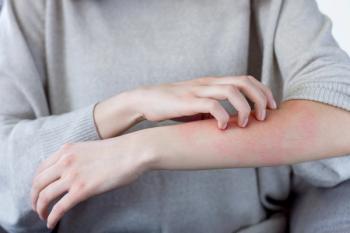
Minority Groups Remain Underrepresented in Vitiligo Trials, Study Finds
Many vitiligo studies don't include enough people with darker skin types, which often leads to missing key demographic details.
Racial and ethnic minority groups remain underrepresented in US vitiligo clinical trials, according to a
Vitiligo affects people of all races, but it can be more noticeable on darker skin, leading to greater stigma.
Authors of the study publish suggest that based on previous studies, those with darker skin might feel more self-conscious because the condition is more noticeable. They added that the way others react to vitiligo also depends on their culture and how they fit into Western society.
To fully understand how vitiligo impacts all, it's critical to include those from all racial and ethnic backgrounds in research.
However, based on previous research, minority groups are often left out of these studies, making it more difficult to get a complete picture of the disease.
For example, many vitiligo studies don't include enough people with darker skin (types V-VI) and often miss key demographic details.
This problem exists in other skin condition research too. For instance, less than 25% of acne, eczema and psoriasis trials reported race and ethnicity, with white participants making up 77.5% of the total.
In response to demographic underreporting, the NIH mandated that NIH-funded trials report participant demographics on clinicaltrials.gov in 2017 to improve transparency.
In this current study, researchers reviewed how well U.S. vitiligo clinical trials reported demographics and whether the participants reflected the overall U.S. population.
U.S. clinical trials for vitiligo from 2006 to 2023 were reviewed by searching clinicaltrials.gov. Trials that aimed to treat vitiligo, took place in the U.S., and were completed or stopped early were the only studies included.
Researchers gathered data on the trial year, funding, type of treatment and participant demographics. The demographics were compared to the overall U.S. population.
Fisher exact tests, a statistical hypothesis tests, were used to see if the trial year, funding or treatment type was linked to how participant demographics were reported.
In a group of 15 studies, only 9 of them (60%) mentioned the race or ethnicity of the people who participated. It was found that studies that received funding from companies and those that started after 2017 were more likely to include this information.
In total, the 9 studies included 1,510 participants. Of those, only about 384 people (25%) were non-White, and 308 (20%) were Hispanic.
In addition, only 4 of the 15 studies reported information on participants' skin types.
With only 15 studies being analyzed, this became a main limitation for the overall. Another was different studies reported race and ethnicity in different ways, making it difficult to compare.
Lastly, researchers claim the U.S. Census doesn’t always accurately count minority groups, especially Hispanics, which may have perceived these groups to be less represented in the study than they were.
Since the 2017 NIH rule, researchers found there has been an increase in how often demographic data is reported in U.S. vitiligo clinical trials. However, participants in these trials still don’t fully represent the diversity of the U.S. population.
Researchers claim some of the reasons why there’s still not enough racial and ethnic diversity in vitiligo trials include a lack of diversity among dermatologists, distrust in clinical research within minority communities and a need for researchers to be more culturally aware.
While vitiligo affects folks in different ways depending on their skin color and background, researchers suggest future studies should include a wider range of people, as it will help make results more useful for those who have vitiligo.
Newsletter
Get the latest industry news, event updates, and more from Managed healthcare Executive.





















































